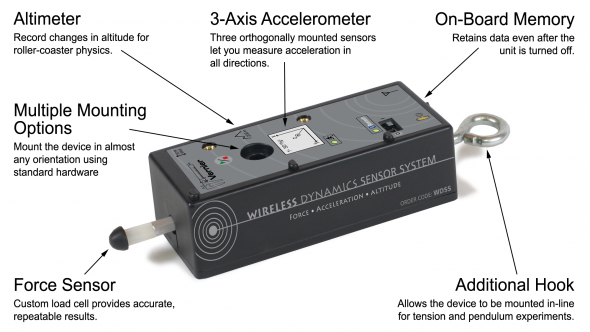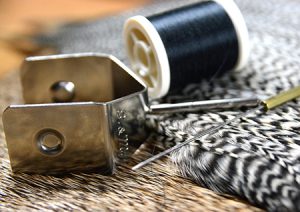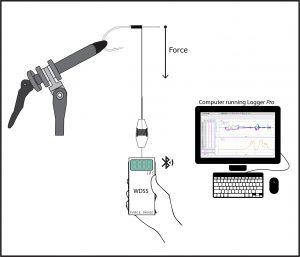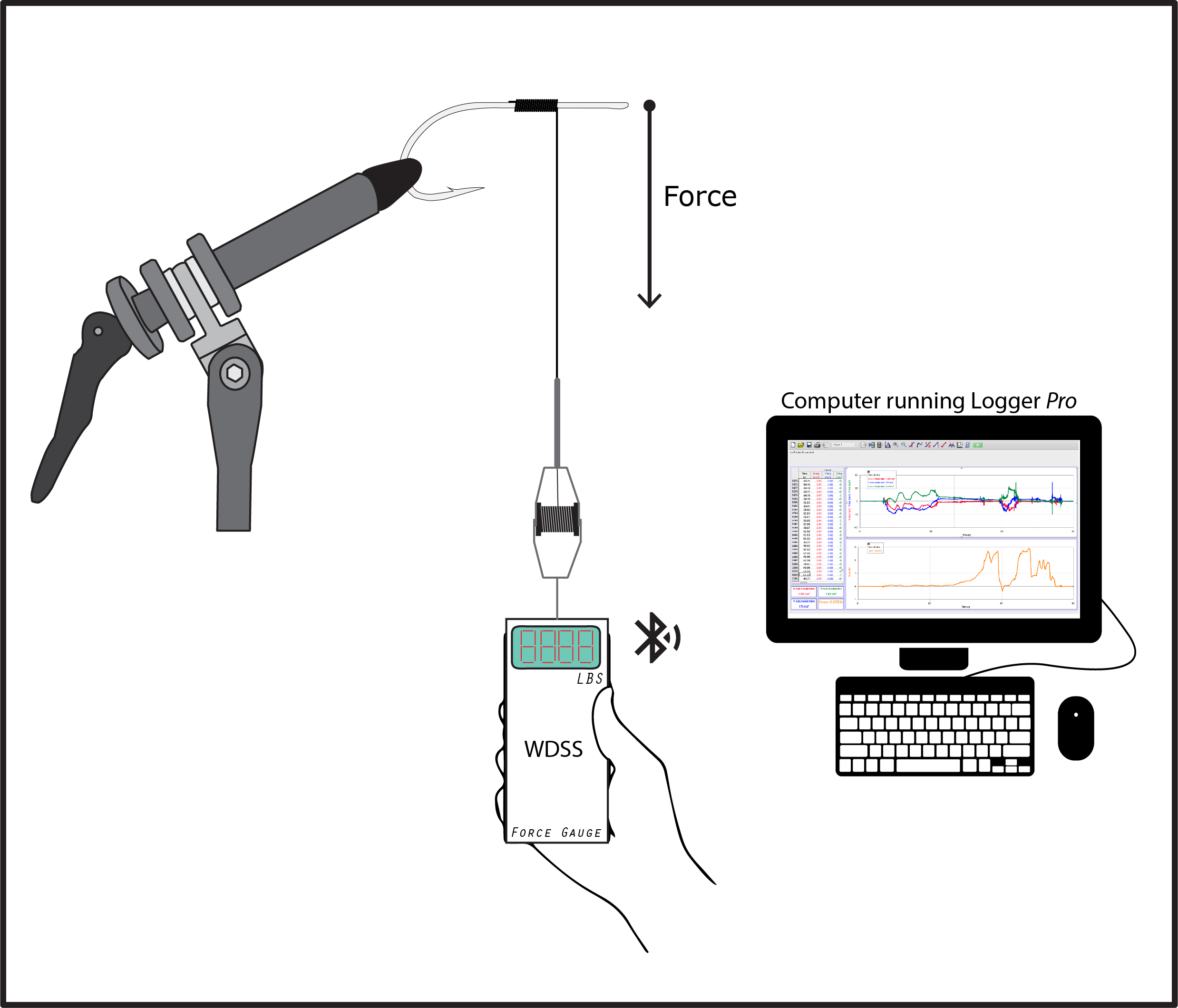I’ve had several questions from readers looking for more details about how I measured tying forces in my article “Let the Force be With You” (Fly Tyer24(2): 71-75, 2018). There is no standard fly tying tool that allows you to measure how much force you apply while securing materials onto a hook shank. I had to come up with my own method. In this post, I’ll go in to more details about the solution I came up with.

To make measurements of tying force, I ended up developing a custom fly tying bobbin that has a force transducer integrated into the handle. The idea for this tool came from a device made by an educational science company called Vernier Software & Technology (www.vernier.com). Vernier calls this particular instrument a Wireless Dynamics Sensor System (WDSS). It has a ±50 Newton (N) force transducer and a three-axis accelerometer built into it, and it communicates with a data acquisition computer via Bluetooth. The WDSS is designed for use in science classrooms, especially for amusement park ride physics studies, motion cart physics labs, pinewood derby cars, and other applications where you want to measure forces when objects of interest are moving. I have used the WDSS in a kid’s science program that my company sponsors, called Catamount Kids (www.CatamountKids.com).
One day, I was working with the WDSS trying to figure out ideas for how I could use this device in a Simple Machines science class I was developing for Catamount Kids. I happened to be at my computer in my fly tying room when I was working on this project. The idea came to me that I could use the WDSS to measure how much force I was applying during fly tying procedures. To make this work, I had to figure out a way to attach my tying thread to the WDSS in such a way that the forces transmitted from my hand to the hook via the thread would be transduced free from any external interferences.
The real challenge was figuring out a way to mount the tying thread to the WDSS so that I could tie a fly without actually touching the thread.

I had several old S&M cradle-style thread bobbins on my bench, and I realized I could make a carriage out of these bobbins that would hold my thread, and I could attach this assembly to the WDSS without any external supports that would interfere with forces transmitted during tying procedures. Since the WDSS doesn’t have any wires, I could, in theory, tie flies with this contraption!
Well, it took quite a bit of practice, but I finally worked out some methods whereby I could tie flies with this force transducer bobbin.

The accompanying illustration shows a schematic of the bobbin I came up with. In the future, we’ll look at how we can use this bobbin to find out where the “bend” of the hook is, exactly. It turns out to be somewhat surprising!


